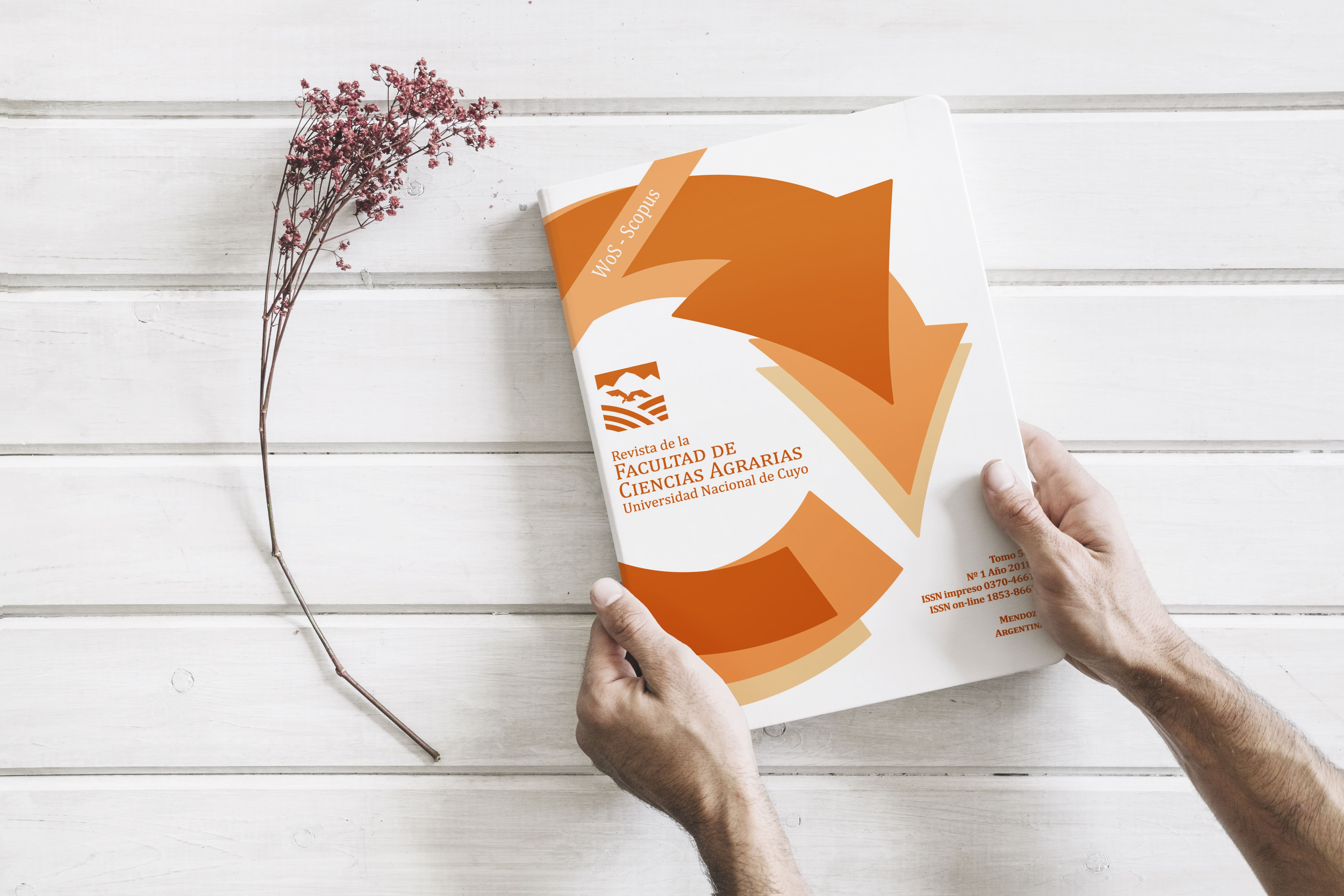Ver ítem
- xmlui.general.dspace_homeCentros Regionales y EEAsCentro Regional Mendoza - San JuanEEA MendozaArtículos científicosxmlui.ArtifactBrowser.ItemViewer.trail
- Inicio
- Centros Regionales y EEAs
- Centro Regional Mendoza - San Juan
- EEA Mendoza
- Artículos científicos
- Ver ítem
Efecto nematicida de extractos de ajo, orujo de uva y alperujo de aceituna; sobre Meloidogyne incognita, en vid, cv Chardonnay = Nematicidal effects of extracts of garlic, grape pomace and olive mill waste, on Meloidogyne incognita, on grapevine cv Chardonnay
Resumen
Meloidogyne incognita afecta significativamente al cultivo de vid en Argentina. Actualmente se dispone de pocas herramientas para su control. El objetivo de este trabajo fue comparar el efecto de extractos acuosos de bulbillos de ajo, de compost inmaduro de alperujo de aceituna, de compost inmaduro de orujo de uva fresco y de compost inmaduro de orujo de uva agotado, sobre el índice de agallamiento (IA), el índice de reproducción de huevos y juveniles J2
[ver mas...]
Meloidogyne incognita afecta significativamente al cultivo de vid en Argentina. Actualmente se dispone de pocas herramientas para su control. El objetivo de este trabajo fue comparar el efecto de extractos acuosos de bulbillos de ajo, de compost inmaduro de alperujo de aceituna, de compost inmaduro de orujo de uva fresco y de compost inmaduro de orujo de uva agotado, sobre el índice de agallamiento (IA), el índice de reproducción de huevos y juveniles J2 (IR) y la población final de hembras de M. incognita (H), en plantas de vid, cv Chardonnay. La experiencia fue realizada en invernáculo, con plantas en maceta. El único tratamiento que presentó diferencias significativas respecto del control fue el extracto de bulbillos de ajo; mientras que los extractos de compost inmaduro de alperujo de aceituna, de compost inmaduro de orujo de uva fresco y de compost inmaduro de orujo de uva agotado, no afectaron los parámetros evaluados. El extracto de bulbillos de ajo disminuyó un 73% el IA, un 80% el IR y un 94% de H, lo que permite esperar que en el futuro pueda desarrollarse a partir de este material vegetal, un nematicida orgánico y de bajo impacto ambiental.
[Cerrar]
Meloidogyne incognita, significantly affects the grapevines in Argentina. Currently there are few tools available to control this pest. The objective of this work was to compare the nematicidal effects of aqueous extracts of garlic bulbils, immature compost of olive mill waste, immature compost of fresh grape pomace and immature compost of spent grape pomace on the galling index (IA), the rate of reproduction of the eggs and juveniles J2 (IR) and the
[ver mas...]
Meloidogyne incognita, significantly affects the grapevines in Argentina. Currently there are few tools available to control this pest. The objective of this work was to compare the nematicidal effects of aqueous extracts of garlic bulbils, immature compost of olive mill waste, immature compost of fresh grape pomace and immature compost of spent grape pomace on the galling index (IA), the rate of reproduction of the eggs and juveniles J2 (IR) and the final population of M. incognita females (H) in grapevines, cv Chardonnay. The experiments were performed with potted plants of grapevines cv Chardonnay, in greenhouse conditions. The only treatment that showed statistically differences compared to the control, was the extract of garlic bulblets; while the extracts of immature compost of olive mill waste, immature compost of fresh grape pomace and immature compost of spent grape pomace, did not affect the evaluated parameters. The extract of garlic bulblets decreased by 73% the IA, 80% the IR and 94% H, therefore the development from this material of an organic nematicide with low environmental impact could be expected.
[Cerrar]

Autor
Martinotti, Marcelo Diego;
Castellanos, Sergio Juan;
Gonzalez, Roxana Elizabeth;
Camargo, Alejandra Beatriz;
Fanzone, Martín Leandro;
Fuente
Revista de la Facultad de Ciencias Agrarias / Universidad Nacional de Cuyo 48 (1): 211-224 (2016)
Fecha
2016
ISSN
0370-4661
1853-8665
1853-8665
Formato
pdf
Tipo de documento
artículo
Palabras Claves
Derechos de acceso
Abierto
 Excepto donde se diga explicitamente, este item se publica bajo la siguiente descripción: Creative Commons Attribution-NonCommercial-ShareAlike 2.5 Unported (CC BY-NC-SA 2.5)
Excepto donde se diga explicitamente, este item se publica bajo la siguiente descripción: Creative Commons Attribution-NonCommercial-ShareAlike 2.5 Unported (CC BY-NC-SA 2.5)


